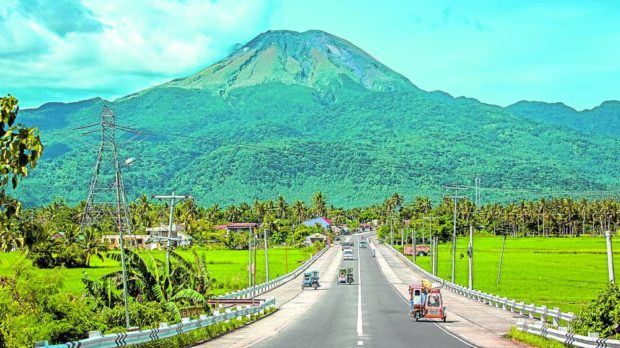Phivolcs to residents near Mt Bulusan: Beware of possible lahar

FILE PHOTO: This October 2022 photo of the Sorsogon provincial government shows Mt. Bulusan in Irosin town.
MANILA, Philippines — State seismologists on Wednesday reminded residents near Mt. Bulusan in Sorsogon province to remain cautious of potential mudflows or lahar due to the volcano’s heightened activity.
The Philippine Institute of Volcanology and Seismology (Phivolcs) said that as of 9 a.m. on January 3, “a total of 116 volcanic earthquakes have been recorded” near Mt. Bulusan.
So, in light of this development, Phivolcs issued the following reminders:
- Do not enter the 4-kilometer radius Permanent Danger Zone (PDZ). Also, be vigilant in the 2-kilometer Extended Danger Zone (EDZ).
- Avoid flying aircraft close to the volcano’s summit.
- People living within the valleys and along the rivers/stream channels should be vigilant against sediment-laden stream flows and lahars in the event of heavy and prolonged rainfall should a phreatic eruption occur.
Phivolcs previously explained in an advisory that a phreatic eruption happens when underground or surface water is heated by magma, lava, hot rocks, or new volcanic deposits, causing steam-driven explosions.
It also described lahars as mixtures of volcanic debris, sediment, and water that flow down a volcano’s slopes through rivers and channels.
Article continues after this advertisementOn Tuesday, state seismologists raised Alert Level 1 over Mt. Bulusan after detecting an increase in the volcano’s seismic activity.
READ: Phivolcs detects increased seismic activity in Mt. Bulusan
Phivolcs said the Bulusan Volcano Network recorded 116 earthquakes since 9 p.m. of Dec. 29, 2023.
It also said that 110 were volcano-tectonic earthquakes associated with rock fracturing beneath the southern flanks at depths of two to six kilometers, and the other six were low-frequency tremors related to the movement of volcanic fluids.
In October 2023, Mt. Bulusan similarly manifested signs of unrest.
READ: Bulusan Volcano shows signs of unrest
